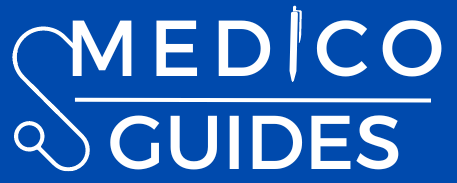Prepared by:
Shahr Bano Sayal (G12)
Compiled by:
Talha Saleem (G12)
Reference Books:
- Mini Katzung Pharmacology Edition 2024-25
- Ali Raza Chaudhary Notes
CARDIOVASCULAR SYSTEM
Note:
- There are only five chapters in this section and all of them are very important.
- The study pattern is the same; first memorize drug classifications from ARC notes and then study the complete topic from Katzung.
Chapter 11:
- Stages of hypertension
- High yield terms: End organ damage, essential hypertension, hypertensive emergency, orthostatic hypertension, rebound hypertension, secondary hypertension
- Start chap from Diuretics heading
- Table 11.1(vvvvvv imp, it was our proff seq)
- Figure 11.1
- Sympathoplegics (all are vvv imp methyl dopa and clonidine k uses and adverse effects)
- Vasodilators (table 11.2 is vv imp)
- Ca+ blocker k uses and adverse effects
- Hydralazine and minoxidil (both require combination use with B blocker and Diuretics)
- Nitroprusside and fenoldopam
- Angiotensin and renin inhibitors (vv imp)
- Why ACE inhibitors are prohibited in renal stenosis?
- Hypertensive emergency (v imp)
- Summary
Chapter 12:
- Angina def and types (vv imp)
- High yield terms: Monday disease, double product, myocardial revascularization, preload and afterload
- Therapeutic strategies (give a read)
- Nitrates uses, MOA, organ system effects, clinical uses and toxicity (vv imp)
- Figure 12.4 (vv imp)
- Nitrites use in cyanide poisoning (seq in pharma and in forensic aslo)
- Ca+ channel blockers and B blockers (v imp)
- Table 12.1 (SEQ) (v imp)
- Newer drugs
- Summary
Chapter 13:
- Def of heart failure
- Fig 13.2
- Cardiac glycosides (digitalis types, MOA, mechanical and electrical effects clinical uses, toxicity and correction) (vvvv imp)
- Table 13.2 (SEQ)
- Read rest of chapter and summary
Chapter 14:
- Classification (Seq)
- Start chap from Group 1 antiarrhythmic, uses and toxicities
- Group 2 MOA, uses and toxicity
- Group 3 Uses and toxicities
- Amiodarone toxicities (it causes Smurfs syndrome blueness)
- Group 4 (v imp)
- Miscellaneous drugs
- Non pharmacological treatment
- Read figure 14.4
- Summary
Chapter 15:
- Classification (SEQ)
- Carbonic anhydrase inhibitors effects MOA, uses and adverse effects)
- Table 15.1(SEQ) (vv imp)
- Loop diuretics (v imp) (MOA, uses and adverse effects and contraindications also)
- Thiazide Diuretics (vvvv imp) (effects uses and toxicities)
- Loop diuretics causes kidney stone formation and Thiazide Diuretics treats kidney stones
- Why Thiazide Diuretics Dec urine excretion despite Diuretics?
- K sparing diuretics
- Osmotic Diuretics (vv imp)
- Antidiuretic hormone and antagonist (v imp)
- Summary
AUTACOIDS
Chapter 16:
- Must do the classification of all drugs
- Histamine is vvvvvv imp
- Table 16.1 (vv imp)
- Difference btw 1st generation and 2nd generation antihistamines
- Clinical uses and toxicities
- Serotonin receptors and their location
- Table 16.2
- Clinical uses and toxicities (vv imp)
- Ergot alkaloids classification
- Just clinical uses and toxicity
- Drugs of migraine (Dr Ajmal’s notes) (vv imp)
Chapter 18:
- Classification
- Location of COX 1 and COX 2
- Figure 18.1
- Effects
- Clinical uses (SEQ) (vv imp)
Chapter 20:
- Classification from ARC notes
- Do this whole chapter from Kaplan and add Ayesha Batool Shortlisting (vv imp)
Chapter 31:
- Opioids classification on basis of strength, on basis of clinical uses
- It’s better to do it from Dr Ajmal’s notes
- Pharmacokinetics, types of receptors
- Peptides names
- Fig 31.2
- Acute and chronic effects (v imp)
- Toxicities (vv imp)
- Tramadol and tapendtadol (vv imp)
- Antagonist names and uses (v imp)
- Summary (vv imp)
Chapter 35:
- Classification of drugs
- Whole chapter is imp
- Mechanism of action of each drug is v.v imp
- Drug interactions is imp











